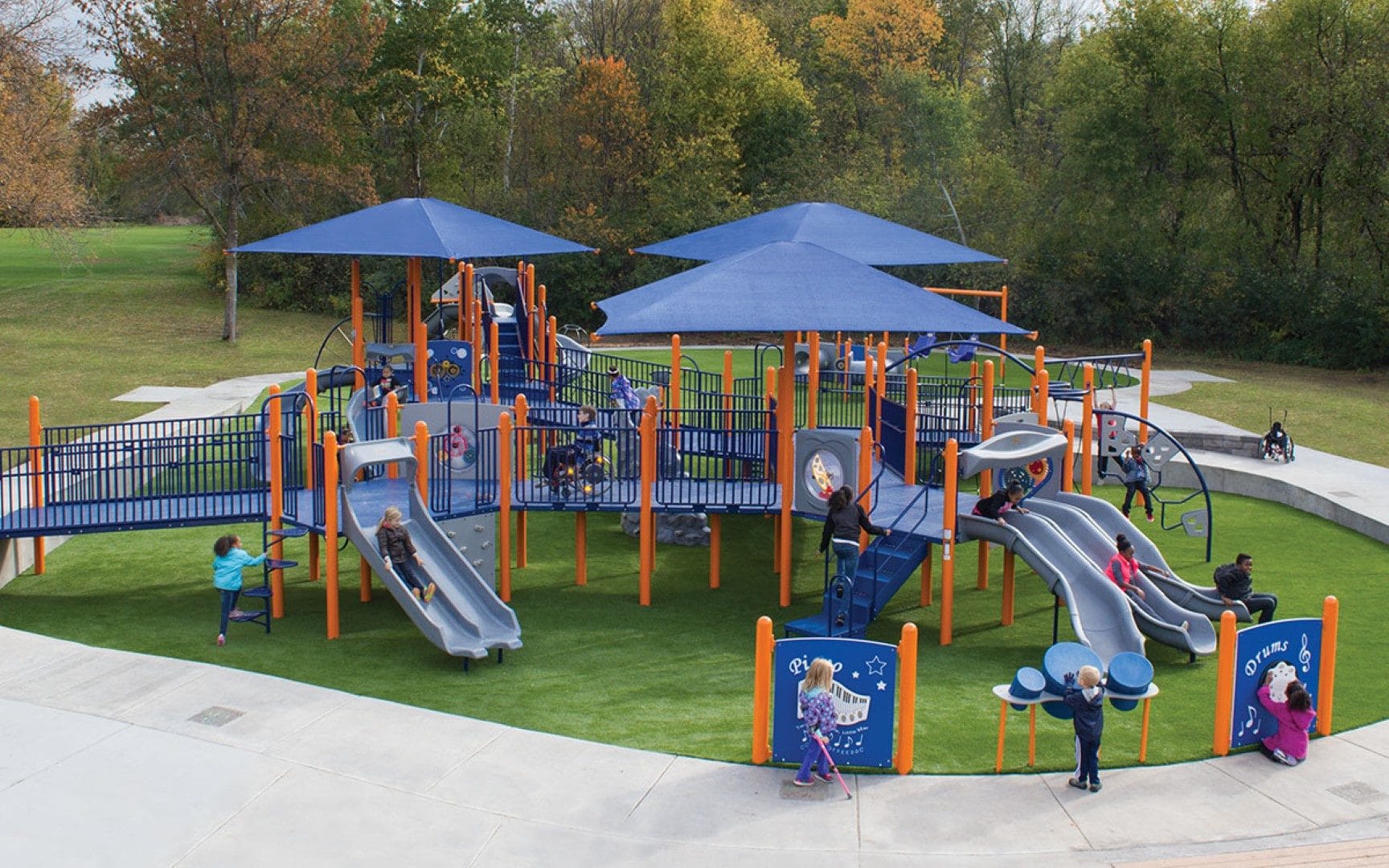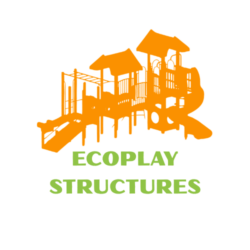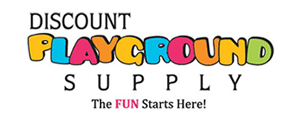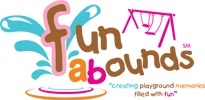Planning the perfect playground can be a fun and relatively easy task when you have the right tools and an experienced playground contractor to partner with. You can let your imagination soar about what all you would like to include in your new play space.
However, there are a few things every playground should include.
1. Shade
Shade structures can be a huge asset in protecting children from excessive sun exposure. These shade structures can be a built-in part of the play structure or a free-standing shade structure that covers the entire playground. Not only will they extend the time that children can spend outdoors playing, but also help to protect the playground from the elements. Playgrounds under shade structures stay looking new longer than those exposed to the sun.
2. Surfacing
Playground surfacing is something that can often be overlooked when designing a playground. However, the availability of different surfacing materials, colors, and patterns allows you to be really creative and pull the whole look together.
With great options like wood for a cost effective, natural feel, or recycled rubber surfacing that comes in a variety of fun colors and patterns, the possibilities are endless. Also keep in mind that the various surfacing materials require different depths to be compliant with safety standards, so make sure to check with a knowledgeable playground contractor.
3. Rest Areas
Rest areas such as picnic tables and benches may not be the most exciting part of the playground but they are important. They give children areas to rest and parent’s places to sit and watch their children play.
4. Amenities
Amenities such as trash receptacles are another part of the play area that can often be overlooked. Properly placed, playground trash cans and recycling containers enhance the beauty of your setting by providing visitors a way to dispose of trash. You can choose a color and material that will match your setting or theme.
5. Safety
Last but definitely not least, before kids jump on that playground equipment, here are few things the Centers for Disease Control and Prevention (CPSC) recommends.
- Look out for tripping hazards.
- Make sure elevated surfaces, like ramps, have guardrails to prevent falls.
- Check that protective surfacing extends at least 6 feet in all directions from play equipment.
- Make sure play structures more than 30 inches high are spaced at least 9 feet apart.
Everyone’s Included: The Benefits of an Inclusive Playground
Play is an important part of childhood development. When children are playing, they are able to progress language, symbolic thinking, social skills, and motor skills. Children who engage in free play are healthier and have higher self-esteem.
These affects can be seen in all children, so it is important that play structures accommodate children of all abilities and developmental levels. This is where inclusive playgrounds come in. Inclusive playgrounds allow all children to engage and play so everyone can be included in the fun.
What is an inclusive playground?
An inclusive playground is about more than wheelchair ramps, although those are important. A wide range of design elements should be included in a play space so all children can interact the structures and other children.
Things to keep in mind when building an inclusive playground include:
- Access: Can any child or parent access this space regardless of their ability? Including ramps and rails as necessary or using ground level play events.
- Engaging: Is the playground engaging, considering factors such as color, sound, texture, movement, and versatility?
- Comfort: Does the play space have a good mix of active and quiet play areas? Quieter rest areas can be helpful for children who may be over stimulated in crowds.
- Cognitive Development: Activities such as swinging, sliding, climbing, spinning, and rocking have both physical and cognitive benefits. Additionally, number or alphabet boards are a fun way to incorporate learning into play.
If you are in the process of planning a new playground or renovating an existing play space, you can start by asking a big-picture question: How will this play space encourage children of all abilities to interact and share play time together?
Playgrounds are a great place for children to engage with peers and make friends. One of the struggles families with disabilities face is fewer places to meet and be part of the community.
According to a study on physical and developmental disabilities, 53 percent of kids with disabilities spent less than two hours a week with their peers outside of the classroom. By making playgrounds inclusive it solves this problem because children of all abilities can play together.
Parks and playground equipment shouldn’t limit or segregate children. It should be a place for children to come together and learn from each other. Inclusive playgrounds encourage play, which leads to a mutual understanding, friendships, and a true feeling of community.
This information is courtesy of fun abounds, which offers a wide selection of commercial playground equipment and aquatic play features from the most trusted product lines in the industry, www.fabplaygrounds.com.














